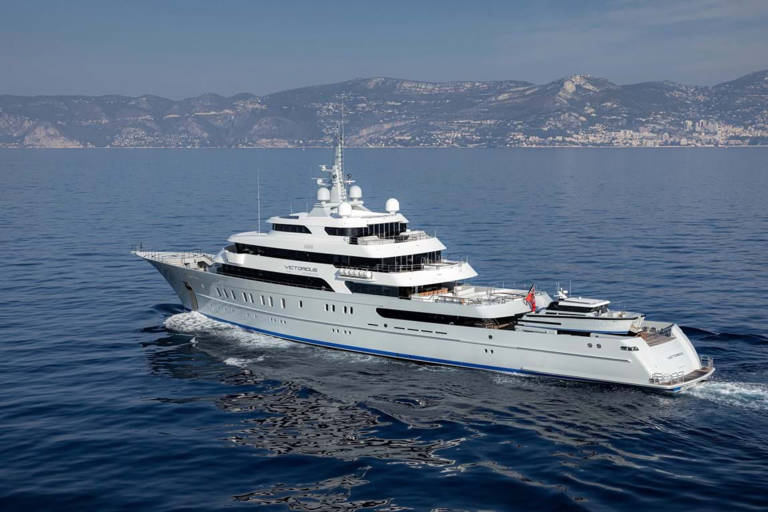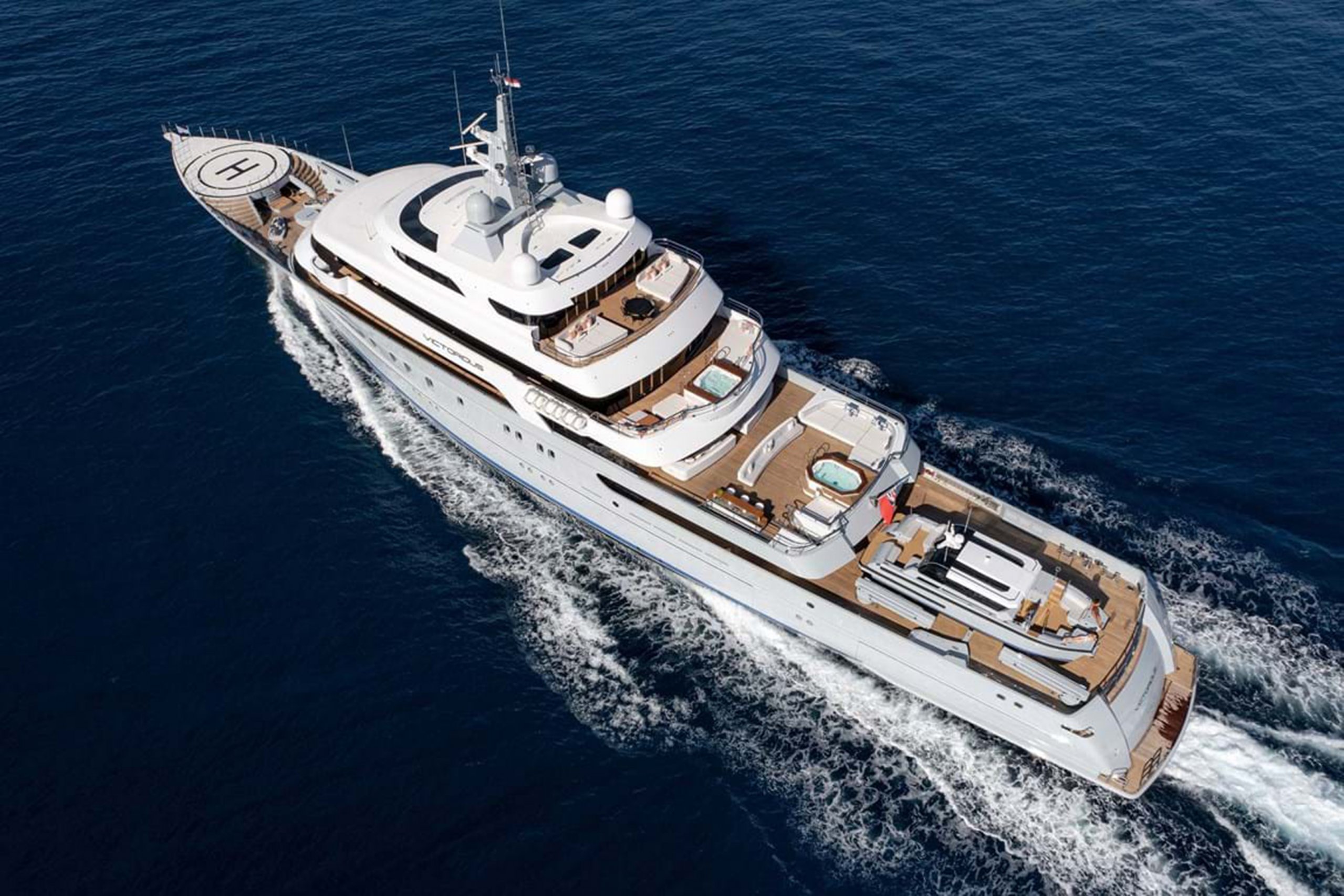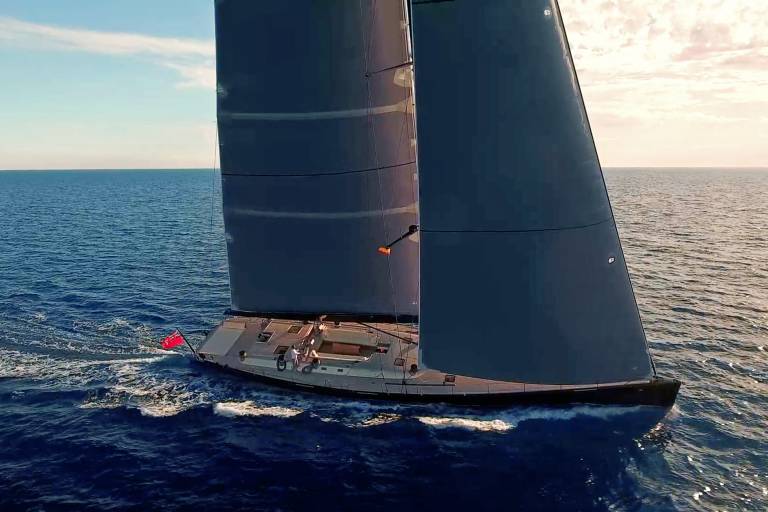Length
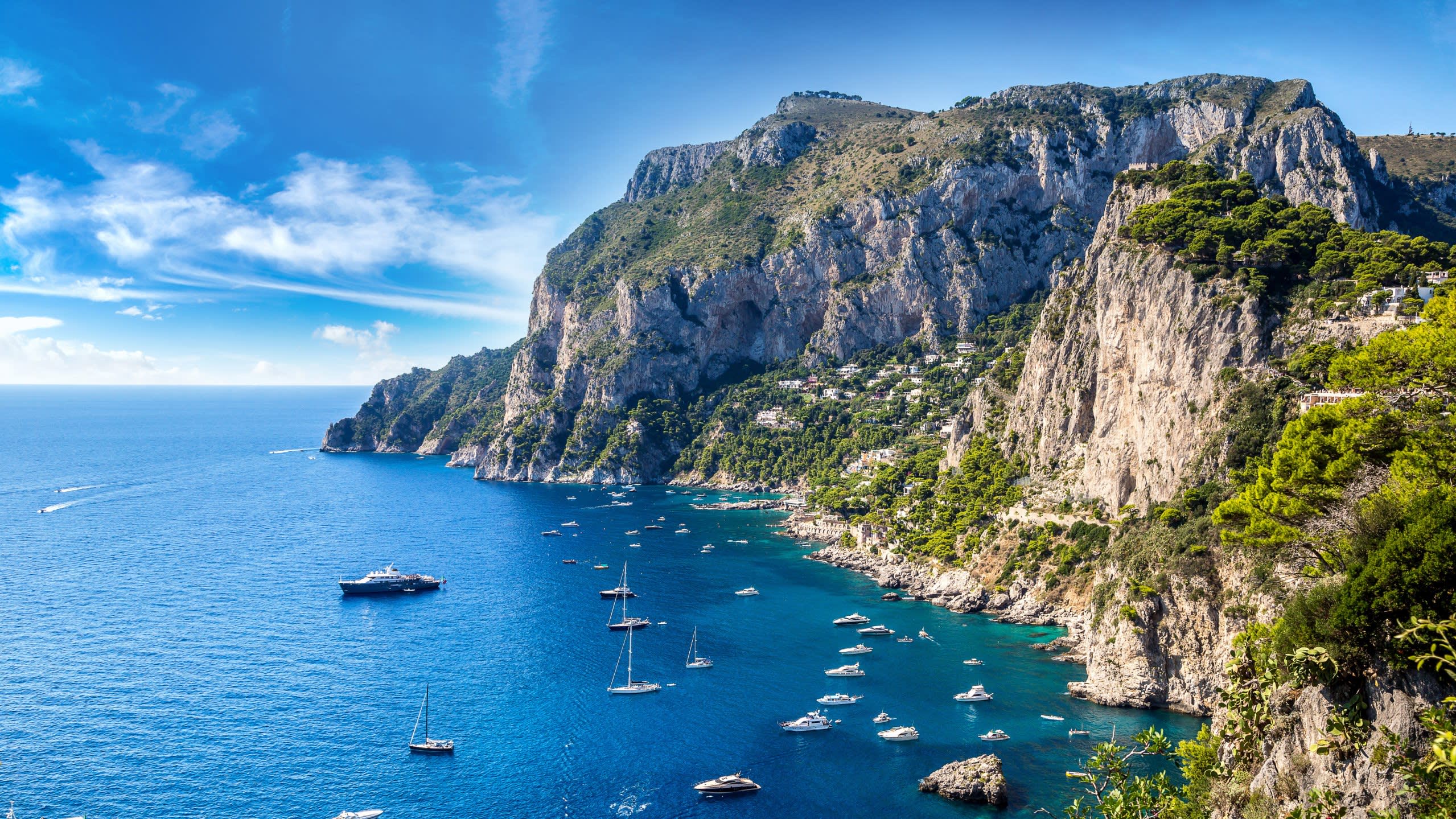
Unmissable Amalfi
Naples to Naples. The Amalfi Coast is Superyacht heaven and for good reason. Hidden coves, secluded beaches and a nightlife to suit all occasions.

Naples to Naples. The Amalfi Coast is Superyacht heaven and for good reason. Hidden coves, secluded beaches and a nightlife to suit all occasions.
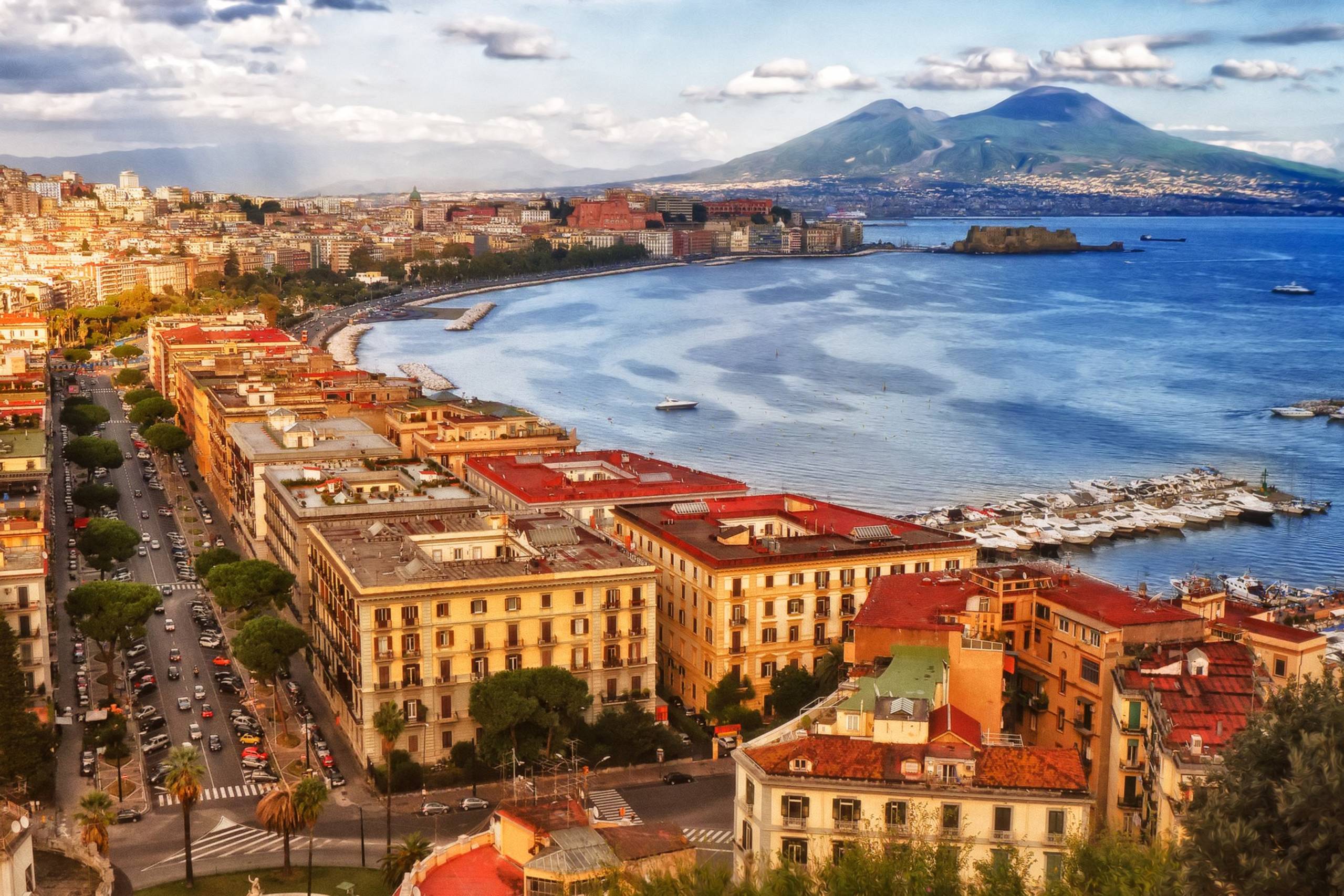
Day 01
Naples was once the world’s greatest port. A dozen empires decamped here, and each one left their mark. The respective legacies of Greeks, Romans, Aragonese and French sum up the city’s sensuous attractions: tumbling streets, ancient ruins, Spanish castles and fine wines. The Neapolitan touchstone rings true today: Vedi Napoli e poi Muori – ‘See Naples and die’.
An hour spent in the boutiques of via dei Mille will dispel Naples’ enduring myth; that its beauty lies in the past. Sure enough, some quarters are not for the faint-hearted. The fish market of Porta Nolana is a living aquarium of octopus, tuna and squid; the historic district of Spaccanapoli is a colourful cauldron of speeding scooters, splendid churches and street markets.
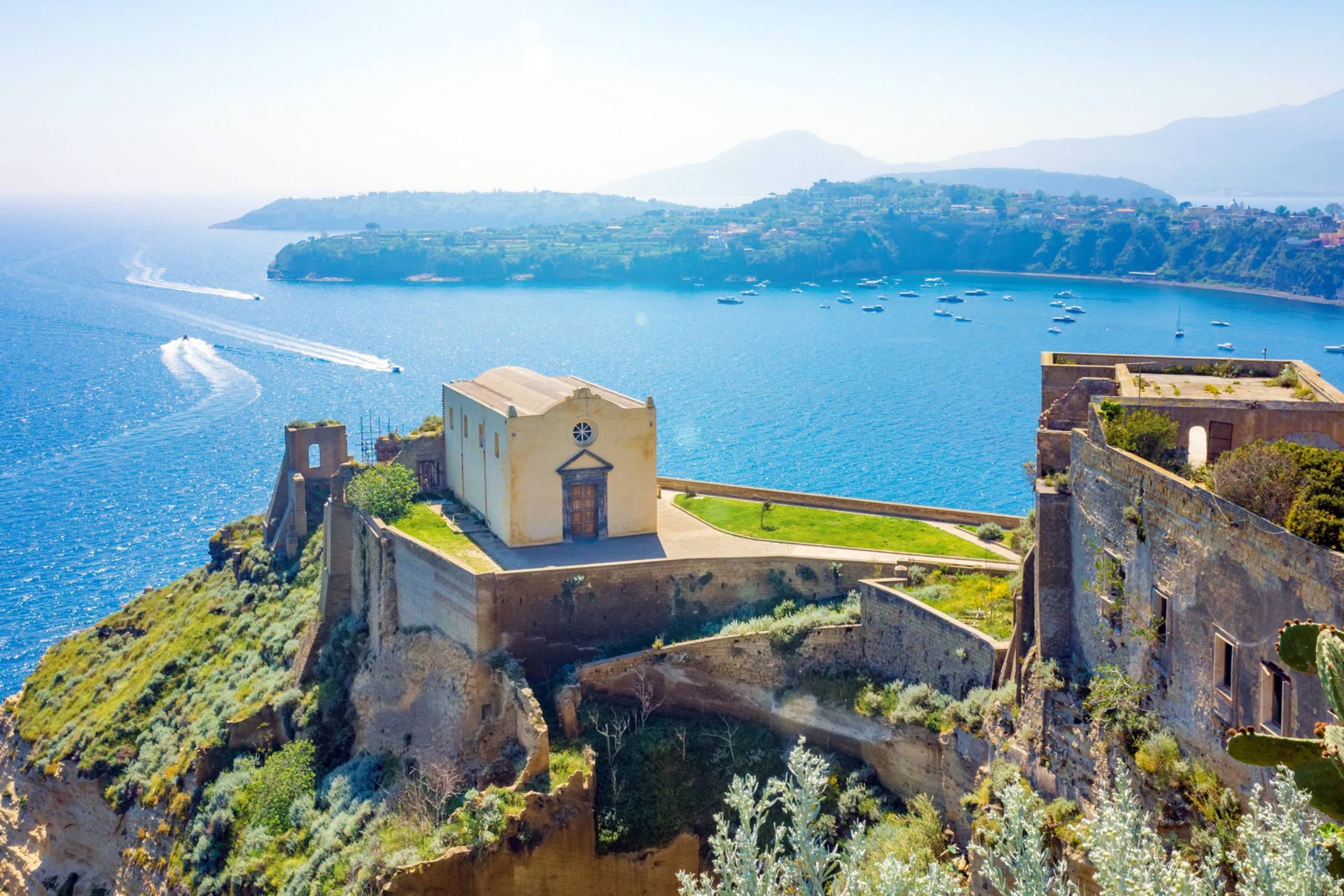
Day 02
Procida is the Bay of Naples' secret island. Cuter than Ischia. More low-key than Capri. It's a photogenic tangle of multi-coloured houses that tumbles into the sea. You won’t be the first sailor to dock at Marina Corricella. Rome's ruling class used Procida as a holiday resort. They could idly cavort behind the island's fortified walls. Stroll this structure today but look the other way: Naples, Capri and the Sorrento Peninsula melt into the surrounding bay.
Recognise Procida's pastel paintbox colours? They have formed the backdrop for a dozen films, including Matt Damon movie 'The Talented Mr Ripley'.

Day 03
Never has an island been so blessed. Ischia sits in a sun-drenched bay with an active volcano at its heart. A torrent of gardens cover the fertile earth, while its geothermal springs will knock five years off any holidaying guest.
The film set beauty of l’Isola Verde: the Green Island, is world-renowned. Matt Damon romanced Gwyneth Paltrow on Ischia’s pretty piazzas in 'The Talented Mr Ripley'. Inland, the island is an Arcadian forest of ferns, fountains, orchids and oaks. Walking and jogging routes criss-cross its jungle-like core, although hailing a three-wheeled 'Ape' microtaxi is considered Ischian chic.
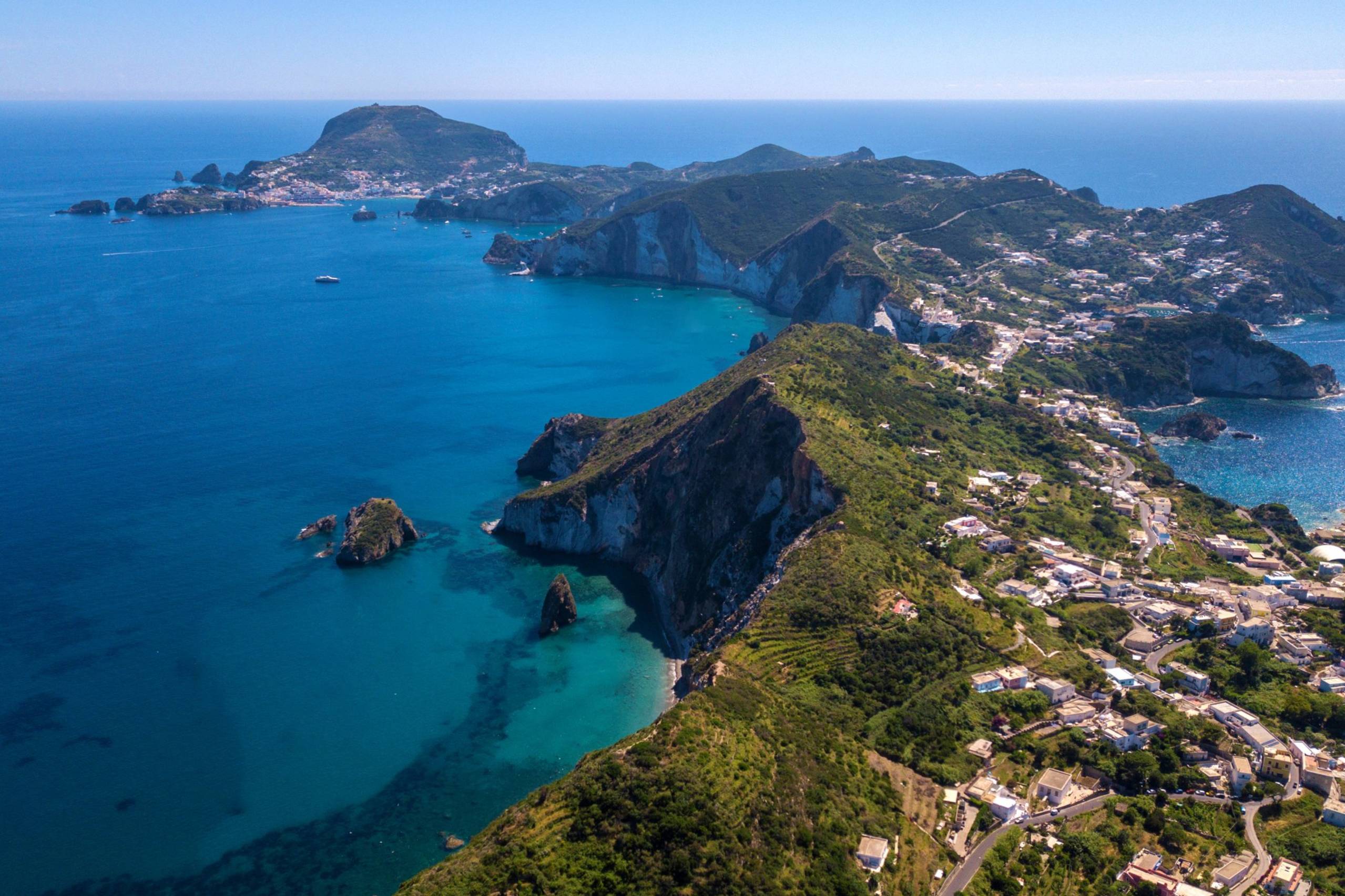
Day 04
The crescent-shaped paradise of Ponza has long been the ultimate island escape. Two thousand years ago, the island was a weekend getaway from ancient Rome. Through the 1950s and 60s, Sophia Loren, Kirk Douglas and Gina Lollobrigida escaped the all-too-adoring public here.
Today, Ponza retains its privileged allure. Guests may take a solitary dip in the piscine naturali that skirt the island’s secluded shores: these natural saltwater swimming pools were formed by volcanic activity millions of years ago. And for visitors who like to stake out their own swathe of sand, Ponza’s handful of honey-hued beaches are accessible only by sea.

Day 05
Capri epitomises island exclusivity. Its very name conjures up café-strewn piazzas and flower-filled lanes. But hotels and moorings are scarce, and by early evening only established guests remain. A sunset daiquiri at Da Paolino followed by a jive at Anima e Cuore are options only for a privileged few. Don sunglasses for a daybreak cappuccino in La Piazzetta and you’ll be welcomed like a local.
Towering cliffs crumble into a turquoise sea to form secluded bays, sandy-bottomed coves and a chain of unnamed, unpopulated, islets. The extraordinary Blue Grotto is one of several watery tunnels to explore, each lit by an eerie coral glow.
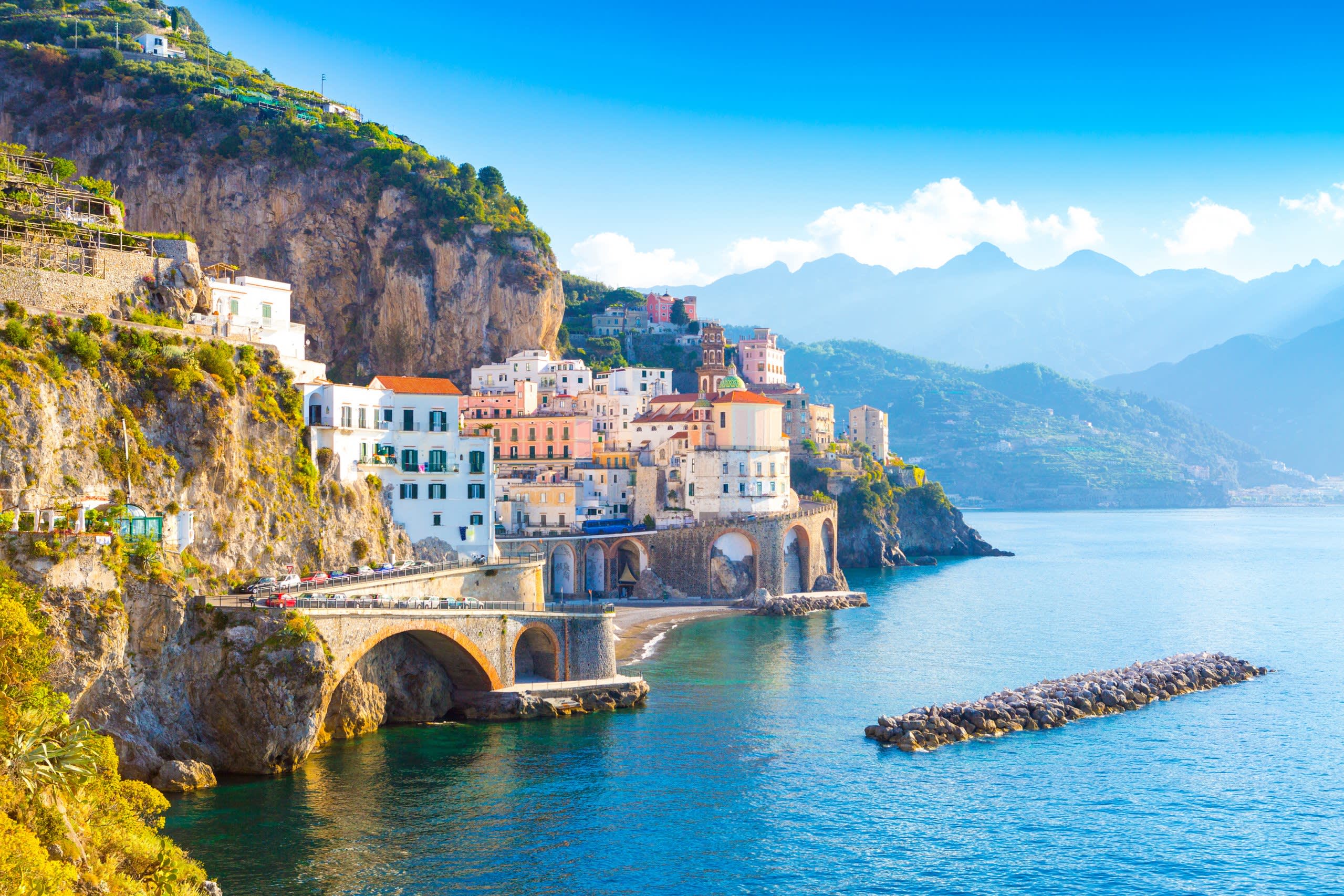
Day 06
Amalfi cashed in its maritime empire in the 13th century. Its gold ducats were wisely spent on whitewashed piazzas and churches that now form a UNESCO World Heritage Site. No architecture is more ostentatious than Amalfi’s spellbinding Cathedral. Its open-air cloisters make the most of a balmy microclimate. Palm trees shade frescoes from the 13th century.
Most contemporary commerce in Amalfi revolves around food. Epicureans will delight in pasticceria sweets, salsicciotto sausage, zeppole donuts and mozzarella in carrozza fritters, plus seafood from the local fishing fleet. Oenophiles may explore the vineyards that cling to the mountainsides for crisp white Falanghina and regional red Olivella wines.

Day 07
Two centuries of celebrity attest that Ravello is Southern Italy’s most atmospheric town. Sir Winston Churchill, Greta Garbo and Virginia Woolf all drew inspiration from the Amalfi Coast that glitters far below. When seen from the Piazza Duomo with a glass of Prosecco in hand, nature’s bounty seems limitless.
Hundreds of metres below Ravello lie a necklace of empty beaches, plus the occasional village that still clings to seafaring tradition. Many visitors are spooked by the infamous Grotta della Smeralda, a watery cavern flooded with an emerald light.
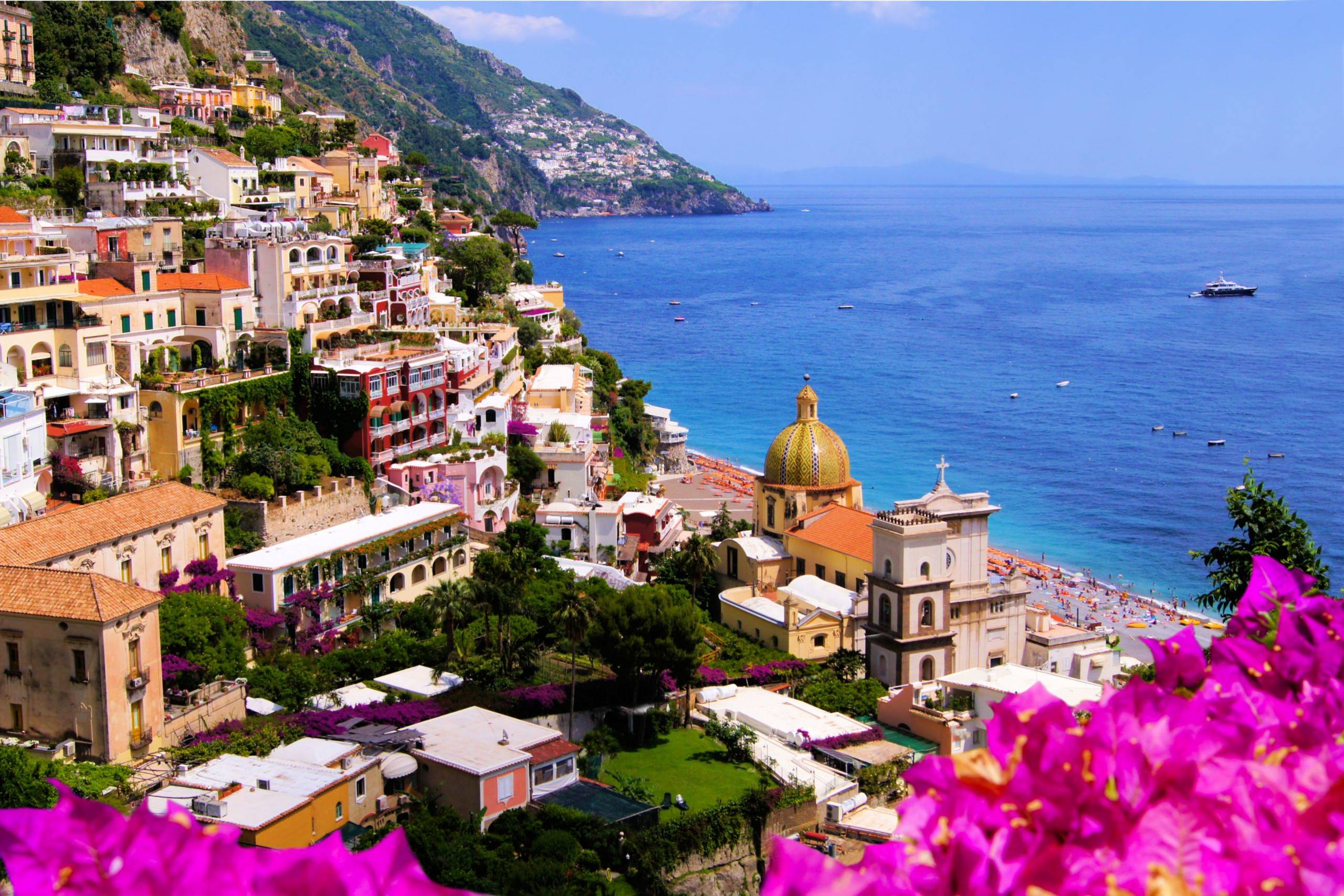
Day 08
Seen from a superyacht deck, Positano is an amphitheatre of colour. Its waterfall of pastel-hued villas drips into a royal blue sea. In the words of summer sojourner John Steinbeck: “Positano is a dream place that isn’t quite real when you are there, and becomes beckoningly real after you have gone.”
All roads in Positano lead down to the beach bars of Spiaggia Grande. Mick Jagger and Keith Richards wrote the bluesy track Midnight Rambler here in 1968. Cooler cats now ramble along the coastal footpath to Spiaggia Fornillo, an altogether more exclusive beach.

Day 09
Sorrento has enjoyed two millennia of uninhibited wealth. Random displays of riches abound - even the local coffee shop in the picturesque old town is covered with 15th century frescoes that would make an art collector swoon. The great and good have been holidaying in Sorrento since Emperor Augustus kicked off the trend. In the 19th century romantic tearaways Lord Byron and Percy Shelley drank its limoncello and DOC Sorrentina white wines. The tree-dappled piazzas and clifftop bars have entertained modern celebrities from Luciano Pavarotti to George Clooney. Those craving a shade more privacy can motor to the crystal-clear water at Tordigliano. This sliver of a beach is only accessible by sea.

On 24th August 79AD Pompeii woke up to a volcanic fury: a 7m-thick layer of lava-like ash saturated the city’s 20,000 inhabitants. Vesuvius’ fallout preserved Pompeii like an organic time capsule, offering a unique window into ancient Roman life. The complex comprises 67 hectares of wealthy city streets. Many villas are lined with fine mosaics and boast heated indoor swimming pools.
Nine panoramic trails loop around the still active Mount Vesuvius. The immense topography runs from arid to moist, from cloud-topped to sun-drenched. Oaks, orchids and volcanic-fuelled vineyards spill down the mountainside. From these vines comes the dense red wine Lacryma Christi – or ‘Tears of Christ’ – a welcome post-hike reward.

Day 10
Marina di Stabia is a perfect start or end point to your Amalfi Coast charter. Enjoy Italian hospitality and fine dining in poolside bars and restaurants at the Yacht Club. Take in views of Naples and the majesty of mount Vesuvius.
Naples was once the world’s greatest port. A dozen empires decamped here, and each one left their mark. The respective legacies of Greeks, Romans, Aragonese and French sum up the city’s sensuous attractions: tumbling streets, ancient ruins, Spanish castles and fine wines. The Neapolitan touchstone rings true today: Vedi Napoli e poi Muori – ‘See Naples and die’.
An hour spent in the boutiques of via dei Mille will dispel Naples’ enduring myth; that its beauty lies in the past. Sure enough, some quarters are not for the faint-hearted. The fish market of Porta Nolana is a living aquarium of octopus, tuna and squid; the historic district of Spaccanapoli is a colourful cauldron of speeding scooters, splendid churches and street markets.

Procida is the Bay of Naples' secret island. Cuter than Ischia. More low-key than Capri. It's a photogenic tangle of multi-coloured houses that tumbles into the sea. You won’t be the first sailor to dock at Marina Corricella. Rome's ruling class used Procida as a holiday resort. They could idly cavort behind the island's fortified walls. Stroll this structure today but look the other way: Naples, Capri and the Sorrento Peninsula melt into the surrounding bay.
Recognise Procida's pastel paintbox colours? They have formed the backdrop for a dozen films, including Matt Damon movie 'The Talented Mr Ripley'.

Never has an island been so blessed. Ischia sits in a sun-drenched bay with an active volcano at its heart. A torrent of gardens cover the fertile earth, while its geothermal springs will knock five years off any holidaying guest.
The film set beauty of l’Isola Verde: the Green Island, is world-renowned. Matt Damon romanced Gwyneth Paltrow on Ischia’s pretty piazzas in 'The Talented Mr Ripley'. Inland, the island is an Arcadian forest of ferns, fountains, orchids and oaks. Walking and jogging routes criss-cross its jungle-like core, although hailing a three-wheeled 'Ape' microtaxi is considered Ischian chic.

The crescent-shaped paradise of Ponza has long been the ultimate island escape. Two thousand years ago, the island was a weekend getaway from ancient Rome. Through the 1950s and 60s, Sophia Loren, Kirk Douglas and Gina Lollobrigida escaped the all-too-adoring public here.
Today, Ponza retains its privileged allure. Guests may take a solitary dip in the piscine naturali that skirt the island’s secluded shores: these natural saltwater swimming pools were formed by volcanic activity millions of years ago. And for visitors who like to stake out their own swathe of sand, Ponza’s handful of honey-hued beaches are accessible only by sea.

Capri epitomises island exclusivity. Its very name conjures up café-strewn piazzas and flower-filled lanes. But hotels and moorings are scarce, and by early evening only established guests remain. A sunset daiquiri at Da Paolino followed by a jive at Anima e Cuore are options only for a privileged few. Don sunglasses for a daybreak cappuccino in La Piazzetta and you’ll be welcomed like a local.
Towering cliffs crumble into a turquoise sea to form secluded bays, sandy-bottomed coves and a chain of unnamed, unpopulated, islets. The extraordinary Blue Grotto is one of several watery tunnels to explore, each lit by an eerie coral glow.

Amalfi cashed in its maritime empire in the 13th century. Its gold ducats were wisely spent on whitewashed piazzas and churches that now form a UNESCO World Heritage Site. No architecture is more ostentatious than Amalfi’s spellbinding Cathedral. Its open-air cloisters make the most of a balmy microclimate. Palm trees shade frescoes from the 13th century.
Most contemporary commerce in Amalfi revolves around food. Epicureans will delight in pasticceria sweets, salsicciotto sausage, zeppole donuts and mozzarella in carrozza fritters, plus seafood from the local fishing fleet. Oenophiles may explore the vineyards that cling to the mountainsides for crisp white Falanghina and regional red Olivella wines.

Two centuries of celebrity attest that Ravello is Southern Italy’s most atmospheric town. Sir Winston Churchill, Greta Garbo and Virginia Woolf all drew inspiration from the Amalfi Coast that glitters far below. When seen from the Piazza Duomo with a glass of Prosecco in hand, nature’s bounty seems limitless.
Hundreds of metres below Ravello lie a necklace of empty beaches, plus the occasional village that still clings to seafaring tradition. Many visitors are spooked by the infamous Grotta della Smeralda, a watery cavern flooded with an emerald light.

Seen from a superyacht deck, Positano is an amphitheatre of colour. Its waterfall of pastel-hued villas drips into a royal blue sea. In the words of summer sojourner John Steinbeck: “Positano is a dream place that isn’t quite real when you are there, and becomes beckoningly real after you have gone.”
All roads in Positano lead down to the beach bars of Spiaggia Grande. Mick Jagger and Keith Richards wrote the bluesy track Midnight Rambler here in 1968. Cooler cats now ramble along the coastal footpath to Spiaggia Fornillo, an altogether more exclusive beach.

Sorrento has enjoyed two millennia of uninhibited wealth. Random displays of riches abound - even the local coffee shop in the picturesque old town is covered with 15th century frescoes that would make an art collector swoon. The great and good have been holidaying in Sorrento since Emperor Augustus kicked off the trend. In the 19th century romantic tearaways Lord Byron and Percy Shelley drank its limoncello and DOC Sorrentina white wines. The tree-dappled piazzas and clifftop bars have entertained modern celebrities from Luciano Pavarotti to George Clooney. Those craving a shade more privacy can motor to the crystal-clear water at Tordigliano. This sliver of a beach is only accessible by sea.

On 24th August 79AD Pompeii woke up to a volcanic fury: a 7m-thick layer of lava-like ash saturated the city’s 20,000 inhabitants. Vesuvius’ fallout preserved Pompeii like an organic time capsule, offering a unique window into ancient Roman life. The complex comprises 67 hectares of wealthy city streets. Many villas are lined with fine mosaics and boast heated indoor swimming pools.
Nine panoramic trails loop around the still active Mount Vesuvius. The immense topography runs from arid to moist, from cloud-topped to sun-drenched. Oaks, orchids and volcanic-fuelled vineyards spill down the mountainside. From these vines comes the dense red wine Lacryma Christi – or ‘Tears of Christ’ – a welcome post-hike reward.

Marina di Stabia is a perfect start or end point to your Amalfi Coast charter. Enjoy Italian hospitality and fine dining in poolside bars and restaurants at the Yacht Club. Take in views of Naples and the majesty of mount Vesuvius.

Yachts For Charter
We use cookies to enhance your browsing experience, analyse our traffic and provide personalised marketing. You can choose whether to accept these, or reject all but essential cookies, according to our Cookie Policy.
let's chat.
Get in touch with one of our teams around the world
Where you'll find us
Monaco — MC
+377 93 50 12 12London — UK
+44 20 7584 1801Fort Lauderdale — US
+1 954 278 3970Auckland — NZ
+64 9 281 5133Contact us
[email protected]Length
Price per week
Dates
Size
Length
Price
Price per week
When
Dates
0 Results
SearchLength
Price per week
Build range
Size
Length
Price
Price per week
Year
Build range
0 Results
Search